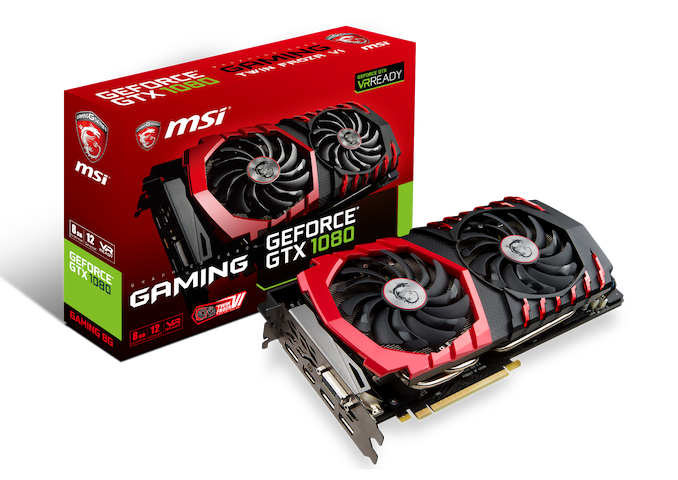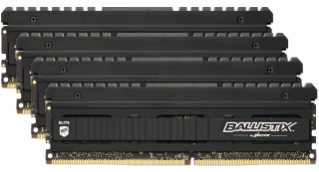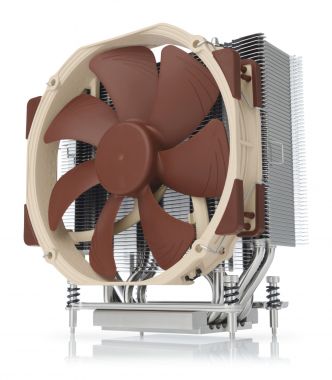The NZXT N7 Z490 Motherboard Review: From A Different Direction
by Gavin Bonshor on October 7, 2020 10:30 AM EST- Posted in
- Motherboards
- Intel
- ASRock
- NZXT
- Z490
- Comet Lake
- Intel 10th Gen
- i7-10700K
- N7 Z490
Board Features
The NZXT N7 Z490 is an ATX-sized motherboard which slots directly into the mid-ranged Z490 portion of the market offering. The main target market is system builders looking to add a bit of flair with its plastic full-cover across the majority of the PCB. It features much of what a board in the $200-250 price point should have, with dual PCIe 3.0 x4 M.2 slots, four SATA ports with support for RAID 0, 1, 5, and 10 arrays, and a premium Realtek ALC1220 HD audio codec. It has two full-length PCIe 3.0 slots that operate at x16/+x4, with three PCIe 3.0 x1 slots. The N7 Z490's memory capabilities include support for DDR4-4266, with a maximum capacity of up to 128 GB across four available memory slots. For cooling, the N7 includes a total of seven 4-pin headers, with one for a CPU, one designated for an AIO pump, and five for regular chassis fans.
| NZXT N7 Z490 Motherboard | |||
| Warranty Period | 3 Years | ||
| Product Page | Link | ||
| Price | $230 | ||
| Size | ATX | ||
| CPU Interface | LGA1200 | ||
| Chipset | Intel Z490 | ||
| Memory Slots (DDR4) | Four DDR4 Supporting 128 GB Dual-Channel Up to DDR4-4266 |
||
| Video Outputs | 1 x HDMI 1.4b | ||
| Video Inputs | N/A | ||
| Network Connectivity | Realtek RTL8125BG 2.5 GbE Intel AX200 Wi-Fi 6 |
||
| Onboard Audio | Realtek ALC1220 | ||
| PCIe Slots for Graphics (from CPU) | 1 x PCIe 3.0 x16 | ||
| PCIe Slots for Other (from PCH) | 1 x PCIe 3.0 x4 3 x PCIe 3.0 x1 |
||
| Onboard SATA | Four, RAID 0/1/5/10 (Z490) | ||
| Onboard M.2 | 1 x PCIe 3.0 1 x PCIe 3.0 x4/SATA |
||
| Thunderbolt 3 | N/A | ||
| USB 3.2 (20 Gbps) | N/A | ||
| USB 3.2 (10 Gbps) | 1 x USB Type-C (Rear panel) 1 x USB Type-A (Rear panel) |
||
| USB 3.2 (5 Gbps) | 2 x USB Type-A (Rear panel) 2 x USB Type-A (One header) |
||
| USB 2.0 | 2 x USB Type-A (Rear panel) 6 x USB Type-A (Three headers) |
||
| Power Connectors | 1 x 24-pin Motherboard 1 x 8-pin CPU 1 x 4-pin CPU |
||
| Fan Headers | 1 x 4-pin CPU 1 x 4-pin AIO 5 x 4-pin Chassis |
||
| 1 x HDMI 1.4b Output 1 x USB 3.2 G2 Type-A 1 x USB 3.2 G2 Type-C 2 x USB 3.2 G1 Type-A 2 x USB 2.0 Type-A 1 x RJ45 (Realtek) 2 x Wi-Fi 6 Antenna (Intel) 5 x 3.5 mm audio jacks (Realtek) 1 x S/PDIF Optical output (Realtek) 1 x Clear CMOS button |
|||
The NZXT N7 Z490 includes a single Realtek RTL8125BG 2.5 GbE port, with Wi-Fi 6 and BT 5.0 connectivity provided by an Intel AX200 CNVi interface. On the rear panel is a very basic set of input and output, with just two USB 3.2 G2 ports (Type-A and Type-C, two USB 3.2 G1 Type-A, and two USB 2.0 ports. Further capability is available for the use of internal headers, with one USB 3.2 G1 header (two ports), and three USB 2.0 headers which can add a further six USB 2.0 ports. For users looking to use Intel's UHD integrated graphics, there is a single HDMI 1.4b video output, while a handily located clear CMOS button is present on the rear panel.
Test Bed
As per our testing policy, we take a high-end CPU suitable for the motherboard that was released during the socket’s initial launch and equip the system with a suitable amount of memory running at the processor maximum supported frequency. This is also typically run at JEDEC subtimings where possible. It is noted that some users are not keen on this policy, stating that sometimes the maximum supported frequency is quite low, or faster memory is available at a similar price, or that the JEDEC speeds can be prohibitive for performance. While these comments make sense, ultimately very few users apply memory profiles (either XMP or other) as they require interaction with the BIOS, and most users will fall back on JEDEC supported speeds - this includes home users as well as industry who might want to shave off a cent or two from the cost or stay within the margins set by the manufacturer. Where possible, we will extend out testing to include faster memory modules either at the same time as the review or a later date.
| Test Setup | |||
| Processor | Intel Core i7-10700K, 125 W, $374 8 Cores, 16 Threads 3.8 GHz (5.1 GHz Turbo) |
||
| Motherboard | NZXT N7 Z490 (BIOS P1.10) | ||
| Cooling | Thermaltake Riing 360mm AIO | ||
| Power Supply | Corsair HX850 850 W 80 PLUS Platinum | ||
| Memory | G.Skill TridentZ DDR4-2933 CL 14-14-14-34 2T (2 x 8 GB) | ||
| Video Card | MSI GTX 1080 (1178/1279 Boost) | ||
| Hard Drive | Crucial MX300 1TB | ||
| Case | Corsair Crystal 680X | ||
| Operating System | Windows 10 1909 inc. Spectre/Meltdown Patches | ||
Readers of our motherboard review section will have noted the trend in modern motherboards to implement a form of MultiCore Enhancement / Acceleration / Turbo (read our report here) on their motherboards. This does several things, including better benchmark results at stock settings (not entirely needed if overclocking is an end-user goal) at the expense of heat and temperature. It also gives, in essence, an automatic overclock which may be against what the user wants. Our testing methodology is ‘out-of-the-box’, with the latest public BIOS installed and XMP enabled, and thus subject to the whims of this feature. It is ultimately up to the motherboard manufacturer to take this risk – and manufacturers taking risks in the setup is something they do on every product (think C-state settings, USB priority, DPC Latency / monitoring priority, overriding memory sub-timings at JEDEC). Processor speed change is part of that risk, and ultimately if no overclocking is planned, some motherboards will affect how fast that shiny new processor goes and can be an important factor in the system build.


















45 Comments
View All Comments
meacupla - Wednesday, October 7, 2020 - link
what, only 6 USB ports on the back?It should be 8 minimum for 2020.
eek2121 - Wednesday, October 7, 2020 - link
Not really? In the back of my machine right now I have a keyboard, mouse, and mic plugged in. In the front I range from 0-2 devices depending on what I am doing.Arsenica - Wednesday, October 7, 2020 - link
As a case manufacturer they should be focused on having lots of front ports.2 Type-C front connectors should be the bare minimum (this MB one has 1) and for the next generation they should be thinking on ways to bring Thunderbolt 4 to the front ports.
tmanini - Friday, October 9, 2020 - link
last I looked the trace length for thunderbolt from controller to port was something like 2 inches. PCIe traces can only go so far and have geometric considerations for impedance and jitter. Getting one on the front of a tower isn't so simple.Arsenica - Sunday, October 11, 2020 - link
In that case a front panel integrated TB hub may be the solution.snowmyr - Wednesday, October 7, 2020 - link
Yeah but, and hear me out on this shocker: you aren't everyone.meacupla - Thursday, October 8, 2020 - link
Yes really.Mouse, 1 port
Keyboard, 2 ports
Game controller, 1 port
Wireless headset dongle, 1 port
USB capture card, 1 port
oh, look, that's 6 ports used.
Seriously, this mobo costs $230. Why would you settle for less USB ports on the back?
OMGWhyMe - Thursday, October 8, 2020 - link
Which keyboard uses 2 ports?IKROWNI - Thursday, October 8, 2020 - link
I have a g910 which uses 2 usb ports. My son has a corsair that uses 2 usb ports.I have a
dragonfly black usb dac (1 port)
Logitech g910 (2 port)
Bose speakers (1 port)
Blue yeti mic (1 port)
Valve index (3 port)
Phone charging cable (1 port)
Logitech power play mouse pad (1 port)
Logitech g502 lightspeed mouse (1 port)
Xbox controller dongle (1 port)
Extra micro charge cable for programming various esp8266 devices (1 port)
So yea I'd love a mobo with more usb ports
littlebitstrouds - Friday, October 9, 2020 - link
And that's why you're on ryzen no? expansion possibilities... go buy a USB card or two... or usb dock. Half these issues have easy solutions, not to mention you wouldn't want that many cables coming out of your computer anyway, it's messy. Get a dock.